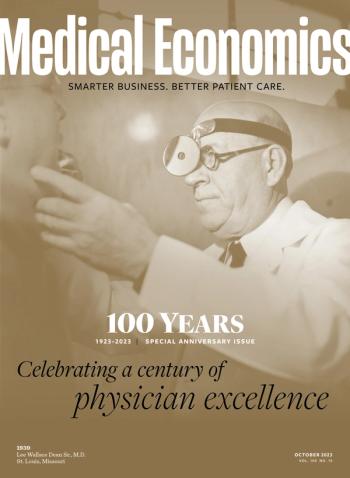
- Medical Economics October 2023
- Volume 100
- Issue 10
The doctors bag in 2023
What stands out about the physician tools of 2023 is how many of them are updated versions of old tech. But it’s the new ones — the computer, and everything it brought with it — that have transformed the profession.
1. Ophthalmoscope
This is a device, similar to the otoscope, that has been in use by physicians for over a century. But today’s devices are more compact and digitized.
2. Nitrile Medical gloves
While surgeons have been using some form of medical glove since the late 19th century, disposable latex gloves became standard across health care settings in the 1980s, prompted by the AIDS epidemic. The latest gloves, made of nitrile, avoid issues of latex allergy.
3. Digital thermometer
Glass thermometers presented two problems: They could shatter, and they had toxic mercury inside. The digital variations used today are incredibly accurate and fast.
4. Electronic Health Record
Go check out the photo of the first EHR system on page 13 of our October print issue. Physicians have lots of complaints about EHRs, but they have come a long way.
5. Stethoscope (modern)
Many minor changes have been made over the years. They now weigh less, sound better and have improved external noise cancelling. Many specialties have their own versions.
6. Computer
The black leather doctor’s bag has been replaced by an over-the-shoulder laptop bag. The computer has revolutionized the way everyone works, including the physician.
7. Wearable devices (Continuous glucose monitor, etc.)
Getting accurate (and realtime) data is key to treating many chronic conditions. Wearable devices such as continuous glucose monitors offer today’s physician incredible insights into their patients’ conditions.
8. Blood pressure cuff
The blood pressure cuff is another diagnostic tool from the 19th century that is still used today. While the actual cuff that squeezes the patient’s arm is largely unchanged, the devices that monitor and report the readings have gone digital.
9. Reflex hammer (modern)
Not much has changed here. Still good for tapping the knee tendon. If it ain’t broke, don’t fix it.
10. Smart phone
Will the smartphone replace the computer as the main way physicians interact with data, patient records and more? Probably, until whatever is next comes along.
11. Pen light
The headlamp is out of fashion these days aside from some specialized uses. Today, more physicians are using small pen lights or just the flashlight on their smartphone.
Articles in this issue
about 2 years ago
The future of medicine - what patients expectabout 2 years ago
The doctor's bag in 1923about 2 years ago
A century of primary care transformationNewsletter
Stay informed and empowered with Medical Economics enewsletter, delivering expert insights, financial strategies, practice management tips and technology trends — tailored for today’s physicians.














